by Georgia Harris
This year our Spotlight on Natives Photo Contest garnered over 200 photos from across the country. While it is exciting every year to see so many lovely photographs of native plants, in this year’s climate of uncertainty, it is wonderful to have such a substantial response from our community. We hope this groundswell of interest in native plants and habitat continues to grow and blossom throughout the coming year.
Each photographer endeavored to capture the essence and beauty of our native flora and fauna whether juxtaposing the cityscape against native plants or capturing the buzz of life that makes a garden habitat. All of the entries inspired and impressed this year’s judges: Jason Hafstad (NJ), Joelle Lopez (FL,) and Lucy Birkett (ME). They ultimately selected two photographs as Best in Show and recognized a 1st Place Winner and three Honorable Mentions in each of three categories:
- Plant Groupings
- Plant Profiles
- Pollinators
Impressed by the quality of submissions and their artistic sensibility, Jason was pleased to “to witness the good work being done across the country to make our living spaces more accommodating to local food webs. The movement to redefine beauty away from manicured landscapes of exotic species and toward ecological integration, functionality and sustainability is undeniable.”
For Joelle, “I appreciate all the behind the scenes work being done to submit so many lovely photos of diverse native gardens and spaces. Championing natives through their gardening not only contributes to being a part of the natural ecosystems, but it involves educating and enlightening neighbors or passersby and thereby effecting more change toward natives as many of the plants and trees featured in the submittals are beautiful in themselves but many attract winged beauties and pollinators to further spark interest.”
Congratulations to our Best in Show and 1st Place winners in all categories. Each will receive a one-year ELA membership. Our thanks and congratulations as well to those earning honorable mentions and to all photographers who submitted their work. Although not every entry could win top recognition, many additional photographs will be recognized in the ELA Newsletter and on the ELA website in upcoming months,
The Winners Are
Best in Show – Tie
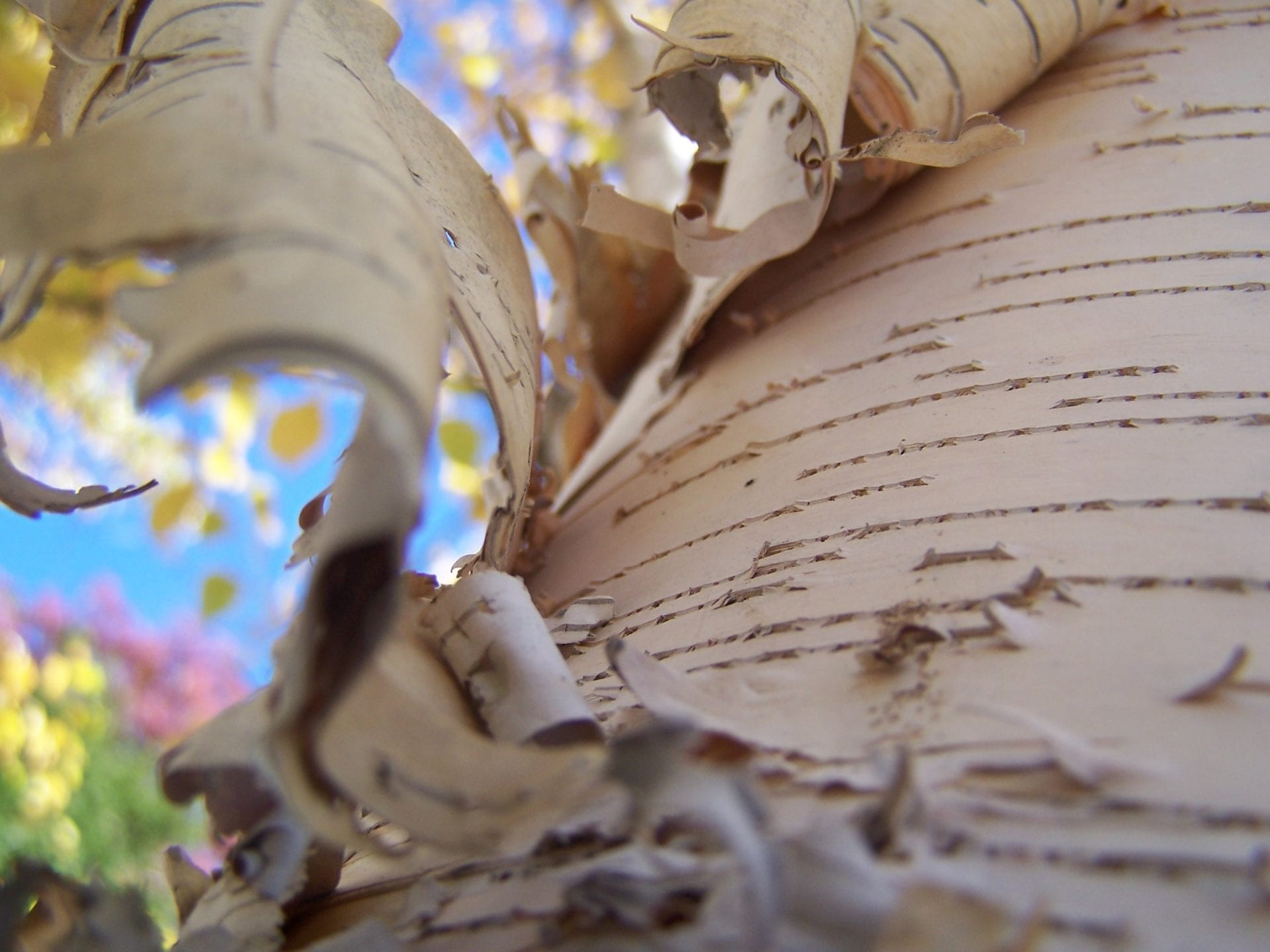
Barbara Conolly: Betula nigra
Photographer: Barbara Conolly, President, Gardens by Barbara Conolly
Photograph: Betula nigra, Ithaca, NY
Taken on the campus of Cornell University, this photo was one in a series on details of tree bark and is my favorite in the collection. It was taken in the spring and reminds me to find the beauty in everything.
Judges’ Comments: We were drawn to the colorful fall foliage out of focus in the background as it contrasts with the white bark.
Best in Show – Tie
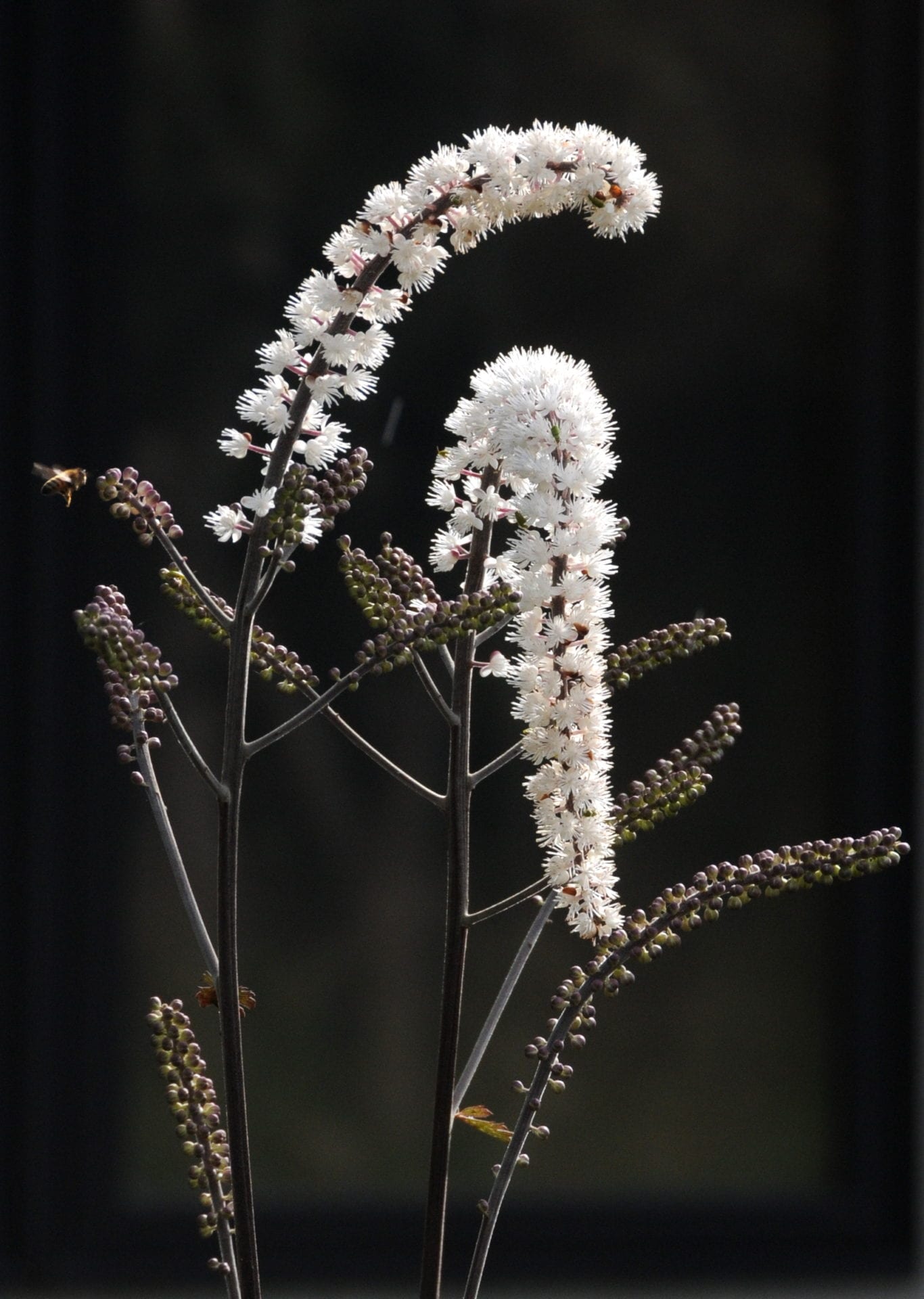
Linda Gurgone: Cimicifuga racemosa
Photographer: Linda Gurgone
Photograph: Cimicifuga racemosa (black cohosh), Bull Valley, IL
I took this photo in our front garden. Late afternoon light touched the top of the black cohosh, while the background was deep in the shadow of our house. Exposing for backlit subjects can be tricky; I was happy this one came out.
Judges’ Comments: This memorable photograph glamorizes the white sprays of blooms in stark contrast to the dark background while capturing an approaching bee to add authenticity to its rare beauty.
Plant Groupings
1st Place
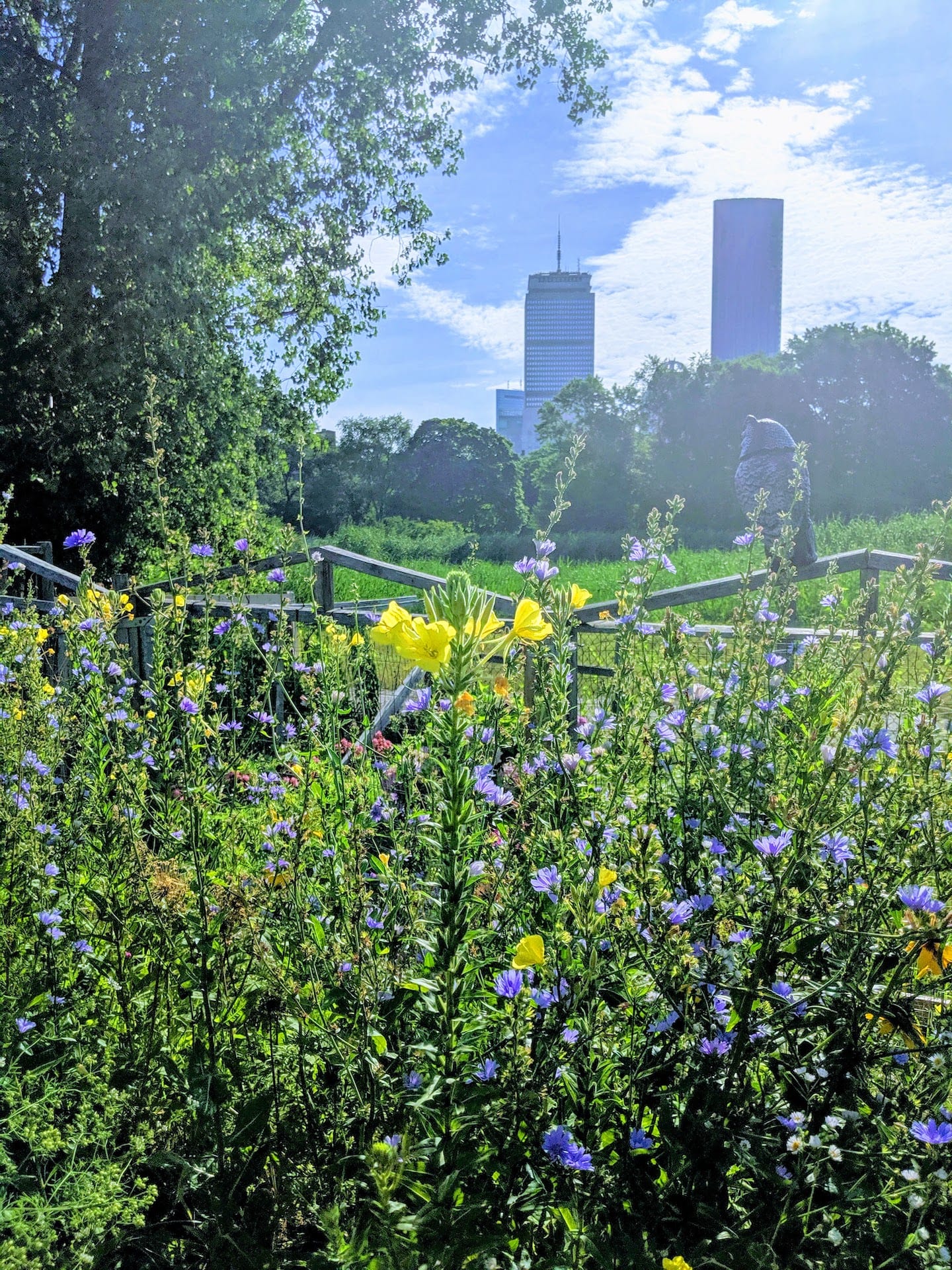
Bryan Obara: Rewilding Fenway Garden Society
Photographer: Bryan Obara, Landscape Architect, STIMSON
Photograph: Oenothera biennis (common evening primrose), Cichorium intybus (chicory), Erigeron annuus (eastern daisy fleabane), Rudbeckia fulgida (orange coneflower)
While some may look at this section of the garden as weedy, I see success in rewilding an urban landscape. It began as an experiment to see what native vegetation would emerge if I did not disturb the soil within the context of Boston’s Back Bay Fens. In the hazy heat of July, this photo encapsulates what a productive garden can be in the heart of the city—providing pollination both day and night with no fertilization and no irrigation.
Judges’ Comments: We appreciated the “rewilding” aspect of this photograph, highlighting the return of an area to native species that are part of an ecosystem. The photograph frames this “rewilding” area as if it is defiantly being held back from spreading its joyful wildness to the looming city in the background. This photo is all about context, and that’s what we found so intriguing.
Plant Groupings
Honorable Mention
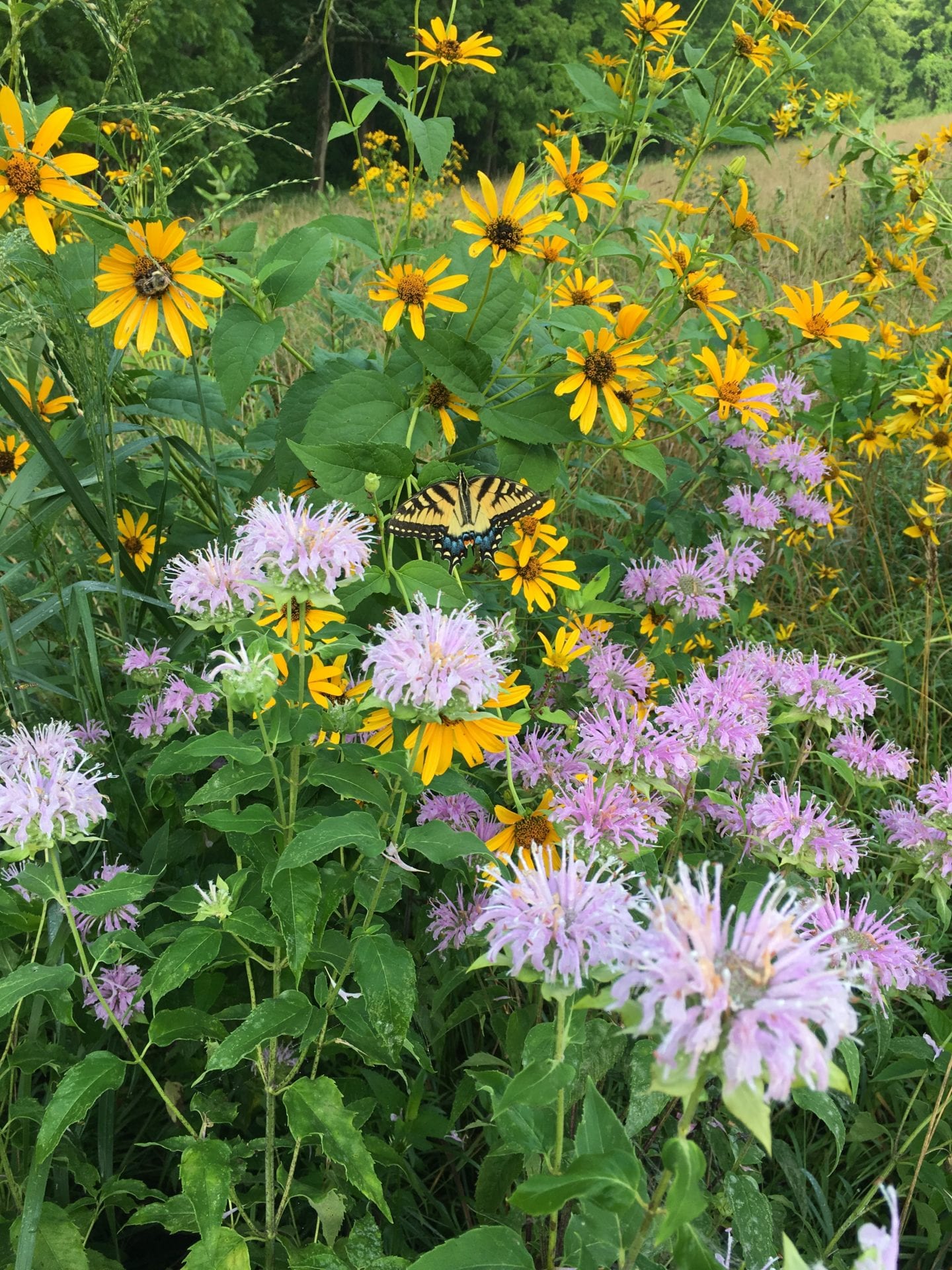
Amy Cornelius: Monarda fistulosa (bee balm) and Heliopsis helianthoides (Oxeye sunflower)
Photographer: Amy Cornelius, Sustainability Consultant, and Gardener, GreenBeams
Photograph: Monarda fistulosa (bee balm) and Heliopsis helianthoides (Oxeye sunflower), Kennett Square, PA
The meadow is grown from seeds sourced from Ernst Conservation Seeds. I love seeing the combinations of flowers that happen in the meadow, especially when happy butterflies come along to enjoy them. This tiger swallowtail stopped to pose over and over again the morning this was taken.
Judges’ Comments: We enjoyed the center stage position of the grass with the delicate raindrops on the spikelets. We appreciate this garden making use of space perhaps others overlook to develop a native border that attracts pollinators, as demonstrated by the bumblebee and tiger swallowtail flitting in the photograph.
Plant Groupings
Honorable Mention
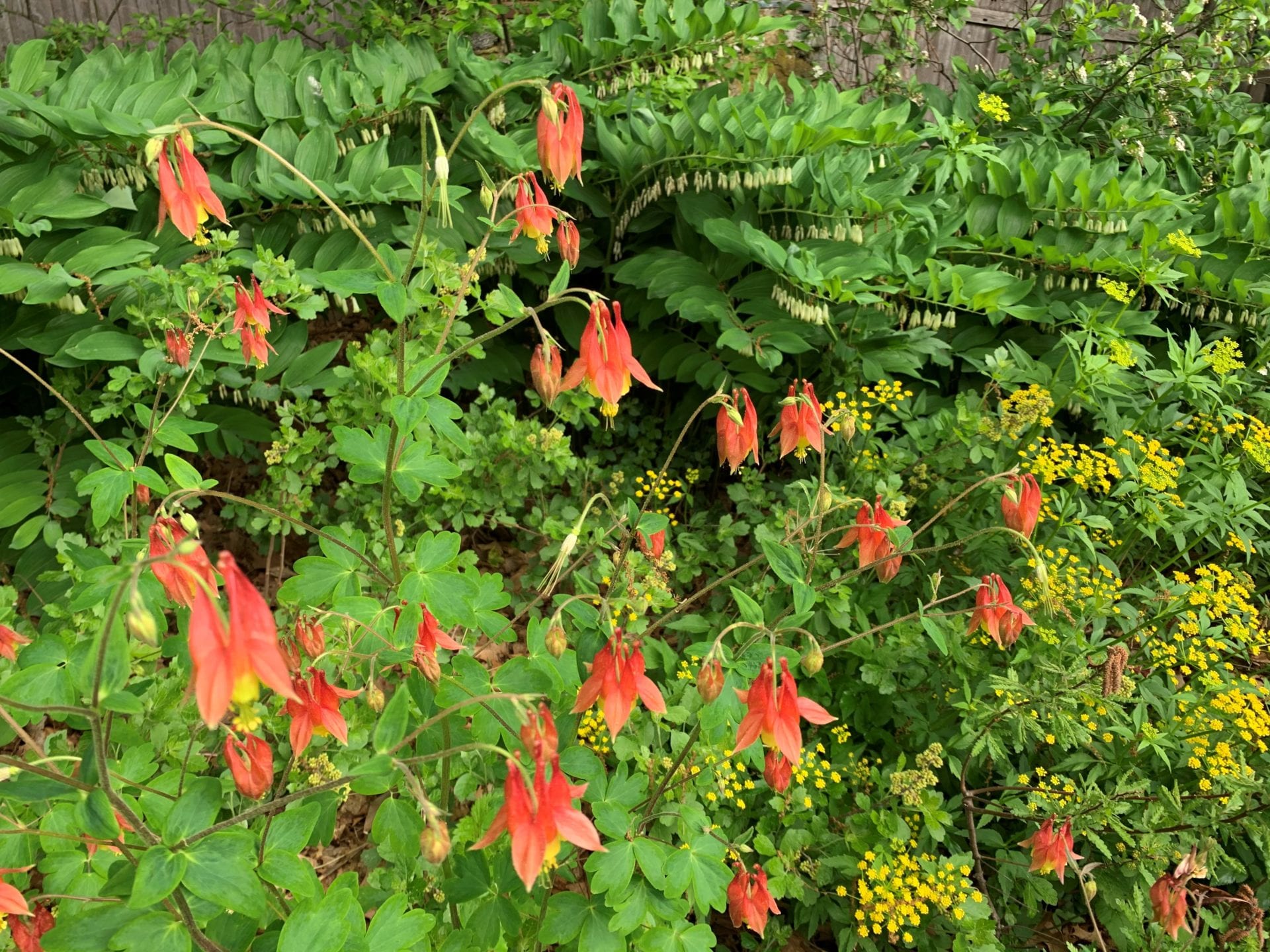
Susan Berliner: Aquilegia canadensis
Photographer: Susan Berliner
Photograph: Aquilegia canadensis (red columbine), Polygonatum biflorum (Solomon seal), Zizia aurea (golden Alexander)
Like so many other people, I have been working remotely over the past several months. It has given me the opportunity to spend a few quiet minutes in the backyard before sitting down to work, at a time of day when I would otherwise be on my way to my job. The light this particular morning was beautiful, making everything just glow.
Judges’ Comments: We liked the layering demonstrated in the plants’ arrangement and the contrast of the green, yellow, and red. One is absorbed by the impressionist style of this garden and taken in by its diversity of shapes and colors not only of the blooms but also of the patterns of leaves and bowed branches.
Plant Groupings
Honorable Mention
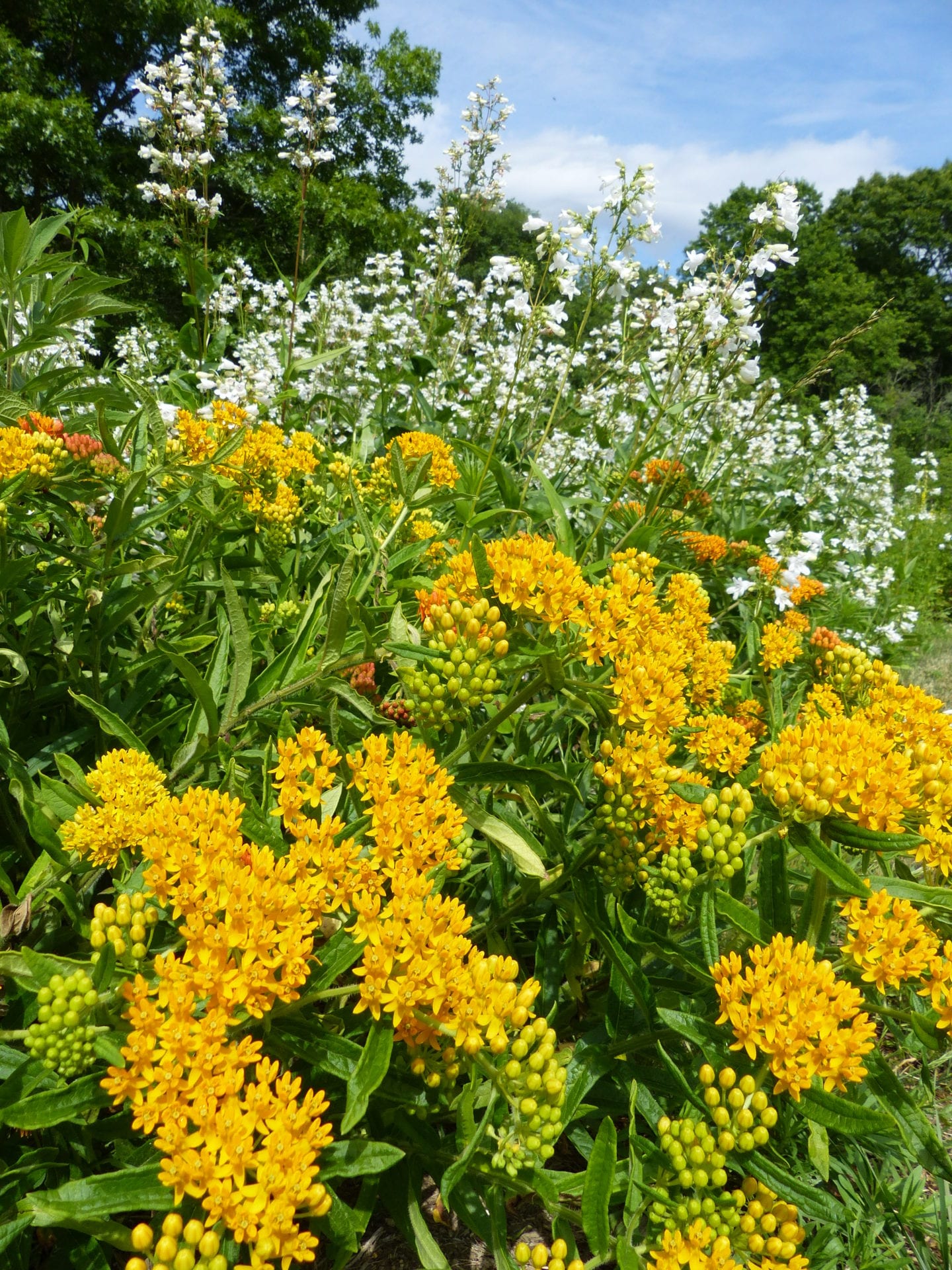
Yael Weiss: Asclepias tuberosa and Penstemon digitalis
Photographer: Yael Weiss, Park Ecologist for Bethpage State Park
Photograph: Asclepias tuberosa (butterfly weed) and Penstemon digitalis (foxglove beardtongue), Farmingdale, NY
The arrangement of butterfly weed and foxglove beardtongue really complemented each other in color and height. Both plants grew among other flowers in a pollinator garden, yet this duo in bloom was the most eye-catching!
Judges’ Comments: This photograph showcases this native garden at the height of its sunny yellow and white blooms. Each cluster of blooms is clearly visible contrasted against the dark green trees in the background.
Plant Profiles
1st Place
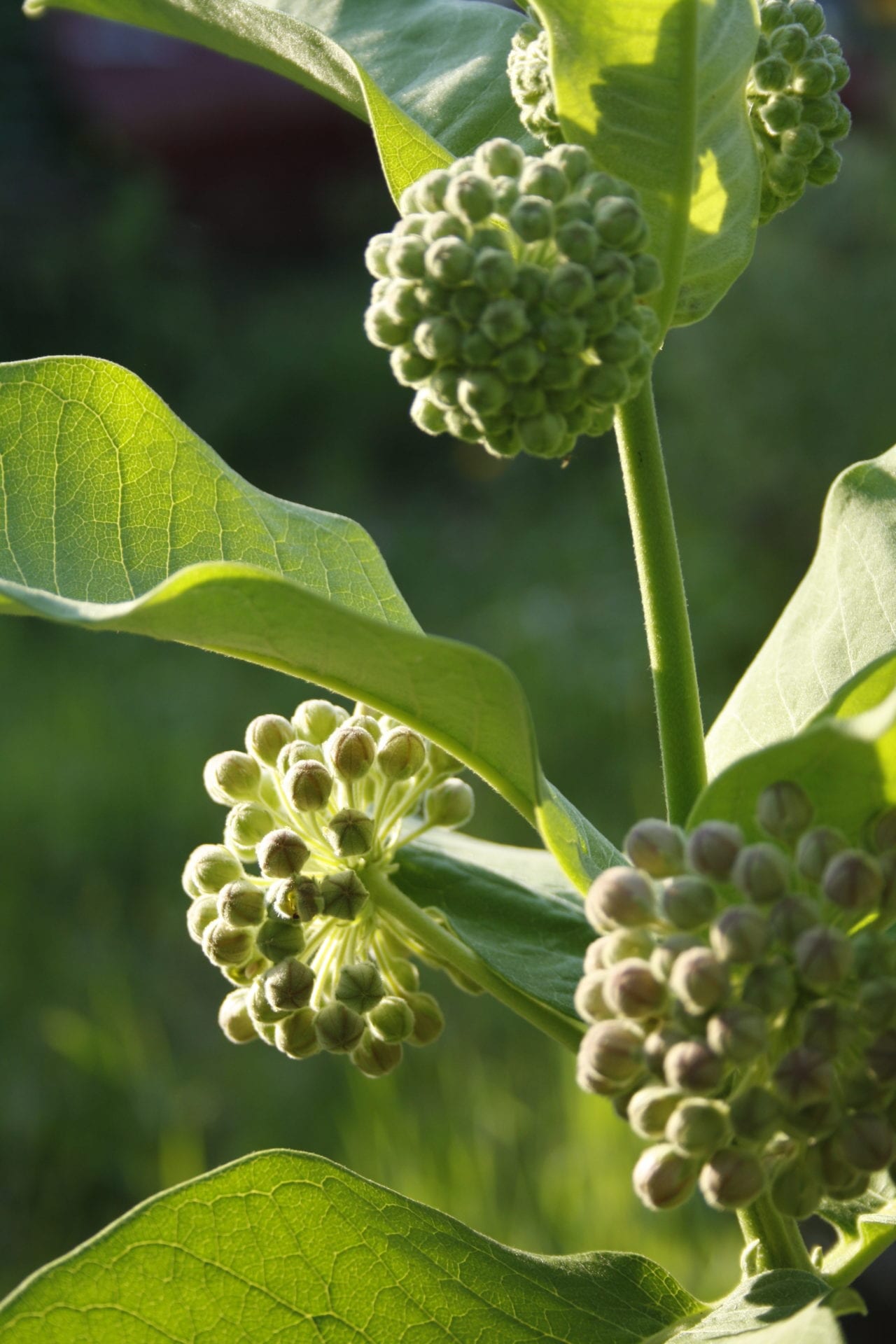
Sundaura Alford Purvis: Asclepias syriaca
Photographer: Sundaura Alford-Purvis, Landscape Designer, A Cultivated Art, Inc.
Photograph: Asclepias syriaca (common milkweed) Perth, Ontario, Canada
An early summer view of common milkweed. While their role in the lifecycle of monarch butterflies is now widely appreciated, milkweed plants are lovely in their own right. They display a strikingly bold leaf structure and showy clusters of blooms that, on closer inspection, reveal geometric details in the tightly furled buds that open to tiny, perfectly folded, fragrant blossoms.
Judges’ Comments: We really enjoyed the way the sunlight hits the leaves and the subtle beauty of the flower buds waiting to emerge. There is a sense of suspense, waiting for the blooms to pop open while eloquently being highlighted and illuminated by the sunlight.
Plant Profiles
Honorable Mention
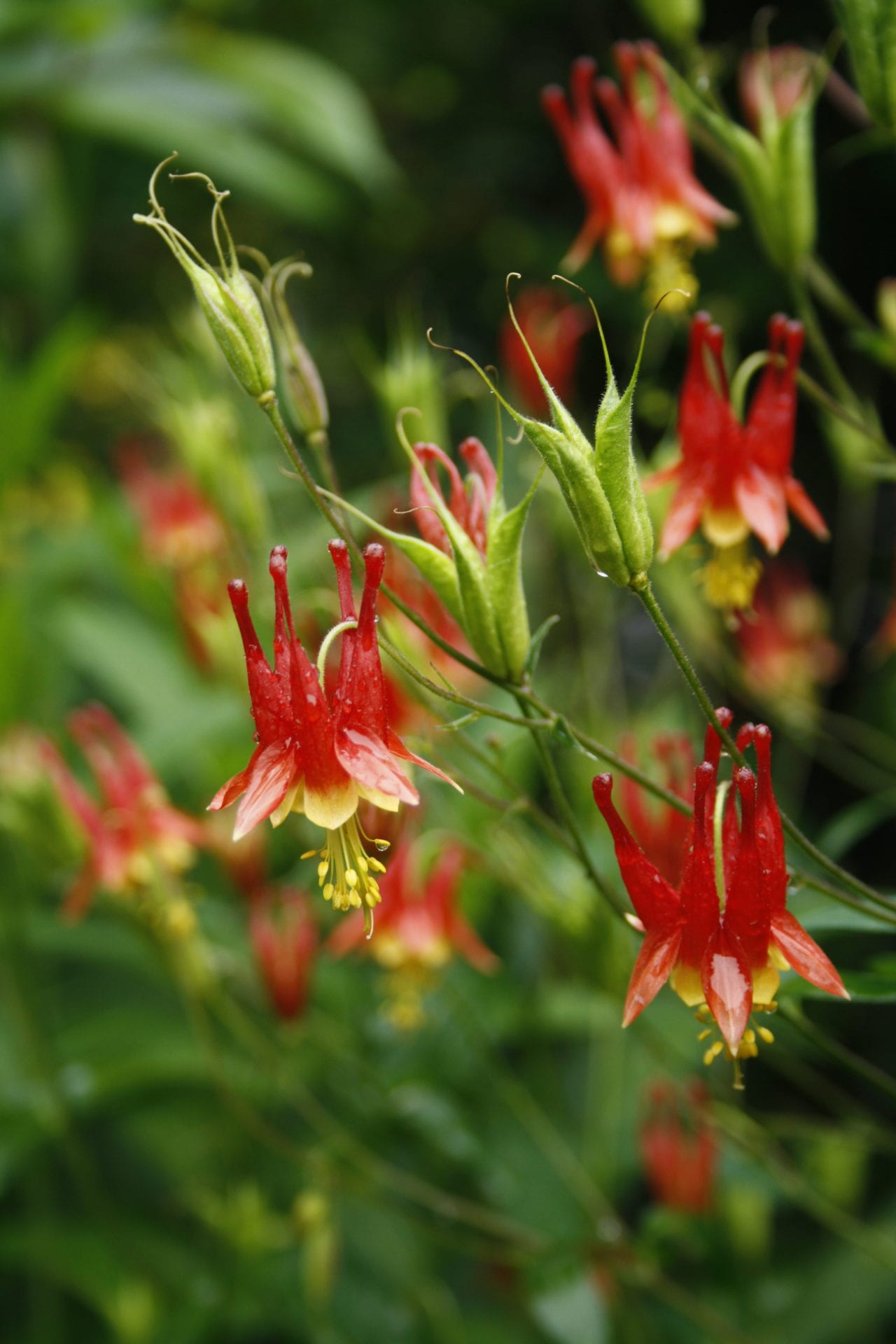
Sundaura Alford Purvis: Aquilegia canadensis
Photographer: Sundaura Alford Purvis
Photograph: Aquilegia canadensis (Canadian columbine)
Aquilegia canadensis (Canadian columbine) Toronto, Ontario, Canada at the Evergreen Brickworks
These brilliant blooms were at their peak in late May of 2013, where they were the ephemeral focal point in large beds of native plants on the grounds of the Evergreen Brickworks.
Judges’ Comments: We love the intense richness of the columbine shooting star blooms alongside their developing distinctive seed pods in full focus. The rain and crisp focus really make the colors of the columbine flower pop.
Plant Profiles
Honorable Mention
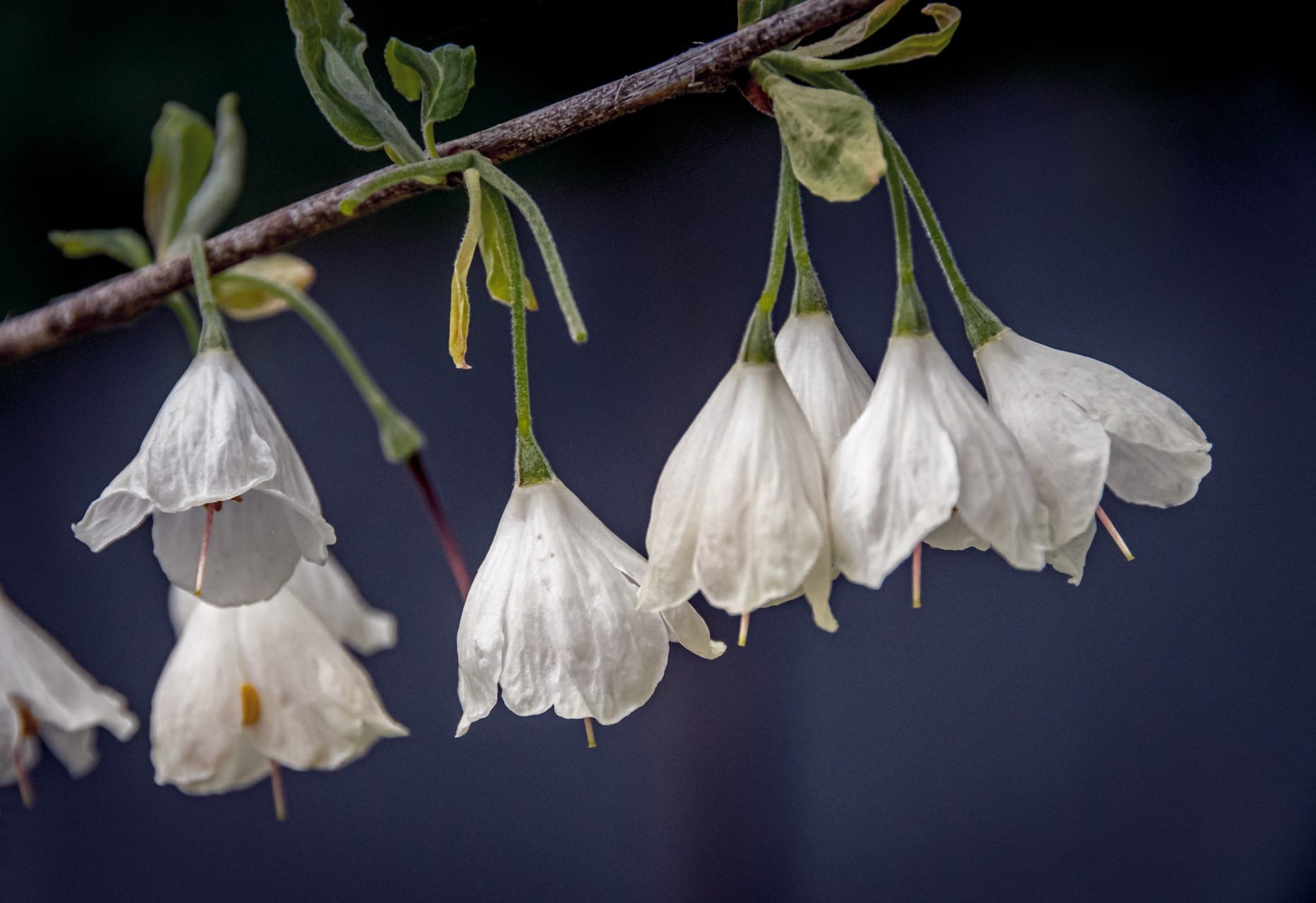
Jerry Harris: Halesia carolina
Photographer: Jerry Harris
Photograph: Halesia carolina (Carolina silverbell), Lexington, MA
The Silverbell tree was full of blooms and very attractive. I focused in on a few of the individual blooms along with the blue fence as a background, and I felt the contrasting colors provided a nice composition.
Judges’ Comments: This photograph captures the grace of this tree. It’s as if the blooms were a line of ballerinas twirling across the stage in contrast to the navy curtain behind.
Plant Profiles
Honorable Mention
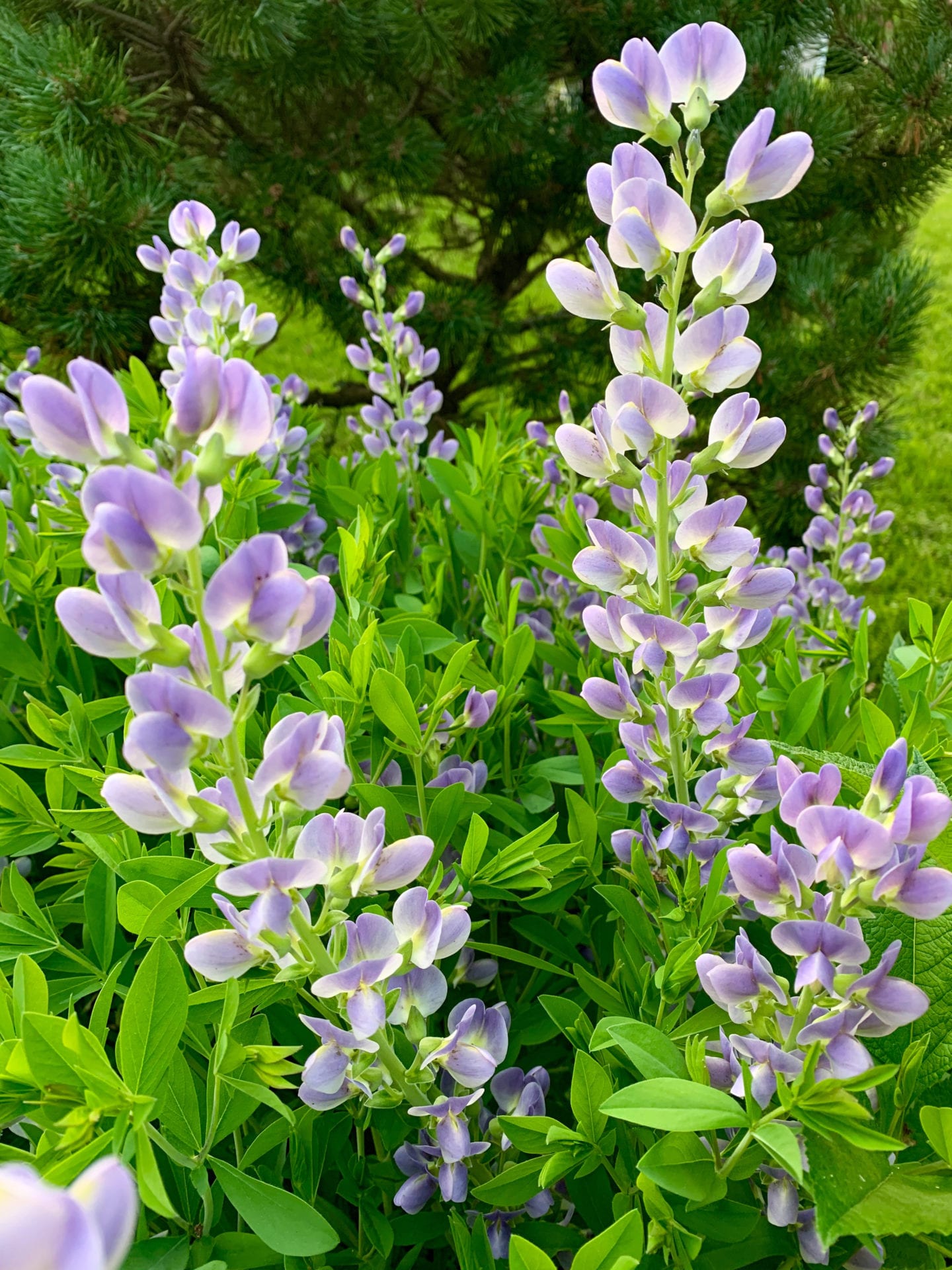
Alexandra Hay: Baptisia australis
Photographer: Alexandra Hay, Professional Practice Manager, American Society of Landscape Architects
Photograph: Baptisia australis (blue false indigo), Chevy Chase, MD
This photograph was taken on a late May evening, with warm, indirect light. I am visually drawn to blue and purple flowers in particular, and this swath of Baptisia australis, in a front yard right by the sidewalk, called to me specifically because it was also abuzz with bees. Though just a five-minute walk from my apartment building, these quotidian moments of beauty in the surrounding neighborhoods have been a special source of tranquility and some visual interest this year.
Judges’ Comments: This lovely photo captures the vibrant energy of the upright blooms as a lavender chorus singing in celebration of Spring.
Pollinators
1st Place
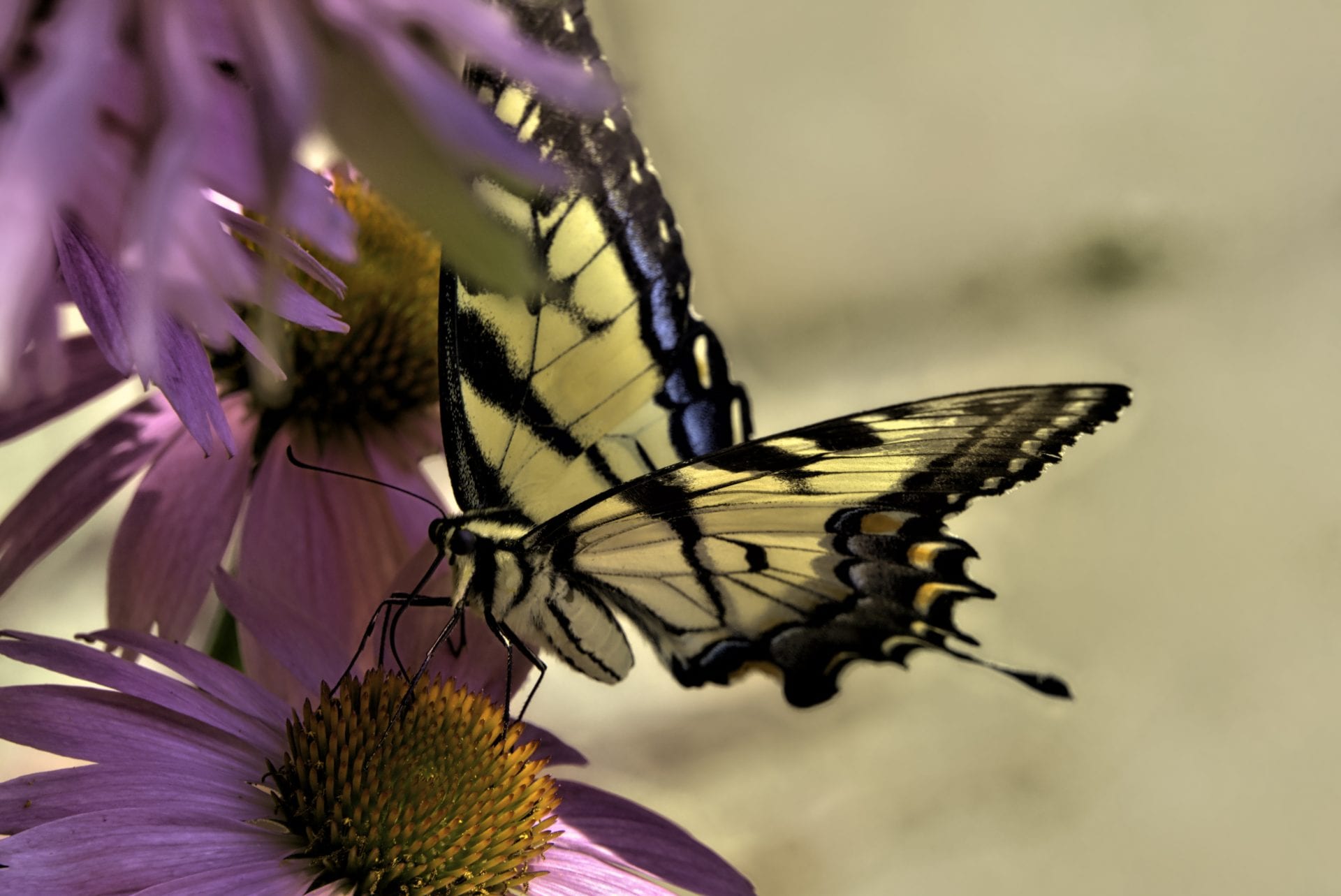
Richard Rappleyea: Echinacea purpurea
Photographer: Richard Rappleyea, President and Co-owner of Central Jersey Landscaping Inc
Photograph: Echinacea purpurea (purple coneflower), Colts Neck, NJ
It was early one morning when a dozen tiger swallowtails visited a flower garden we planted a few years ago. They spent a lot of time on coneflowers, which were in full bloom in mid-July, making it easy to capture this image.
Judges’ Comments: The incredible detail shown in this macroshot is not easy to capture. This is an amazing up-close shot detailing a tiger swallowtail mid flutter while nectaring from purple coneflower, which provides a nice platform to support large pollinators stopping by to enjoy their meal.
Pollinators
Honorable Mention
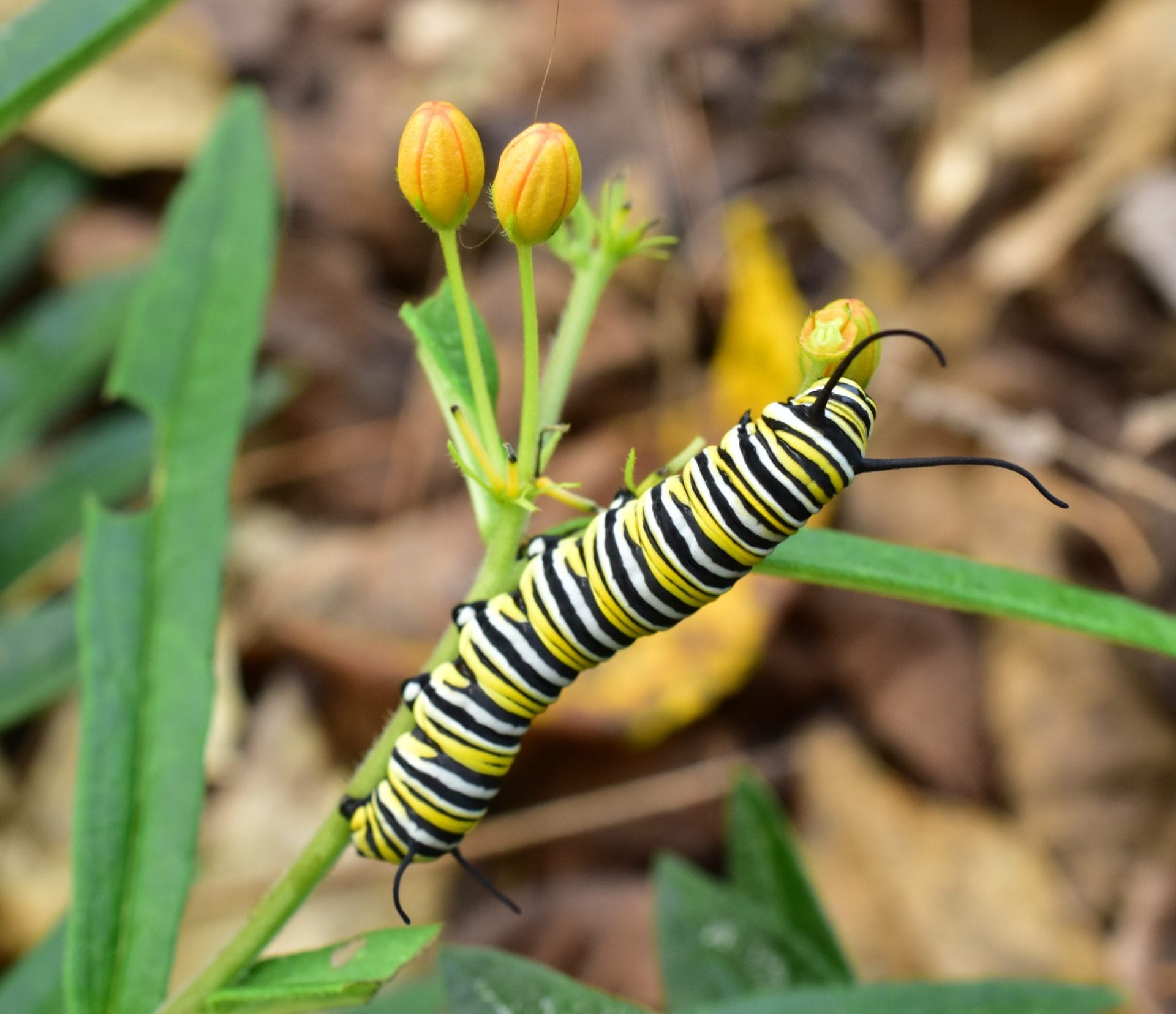
Lucy Hooper: Asclepias tuberosa being devoured by Monarch caterpillar
Photographer: Lucy Hooper
Photograph: Asclepias tuberosa (butterfly weed), Mickleton, NJ
I take many photos of monarch caterpillars in my yard but thought this one stood out. The partially devoured bud illustrates that the hungry caterpillar can devour the entire plant, but these tenacious native plants always make a comeback!
Judges’ Comments: Nature is messy, chaotic, and imperfect. This photograph illustrates the nature of butterfly gardening, some native milkweeds can be difficult to grow, so we fret to get them to grow enough before the monarchs return but are happy to see the caterpillars happily munching down and growing fat to ensure future returning generations.
Pollinators
Honorable Mention
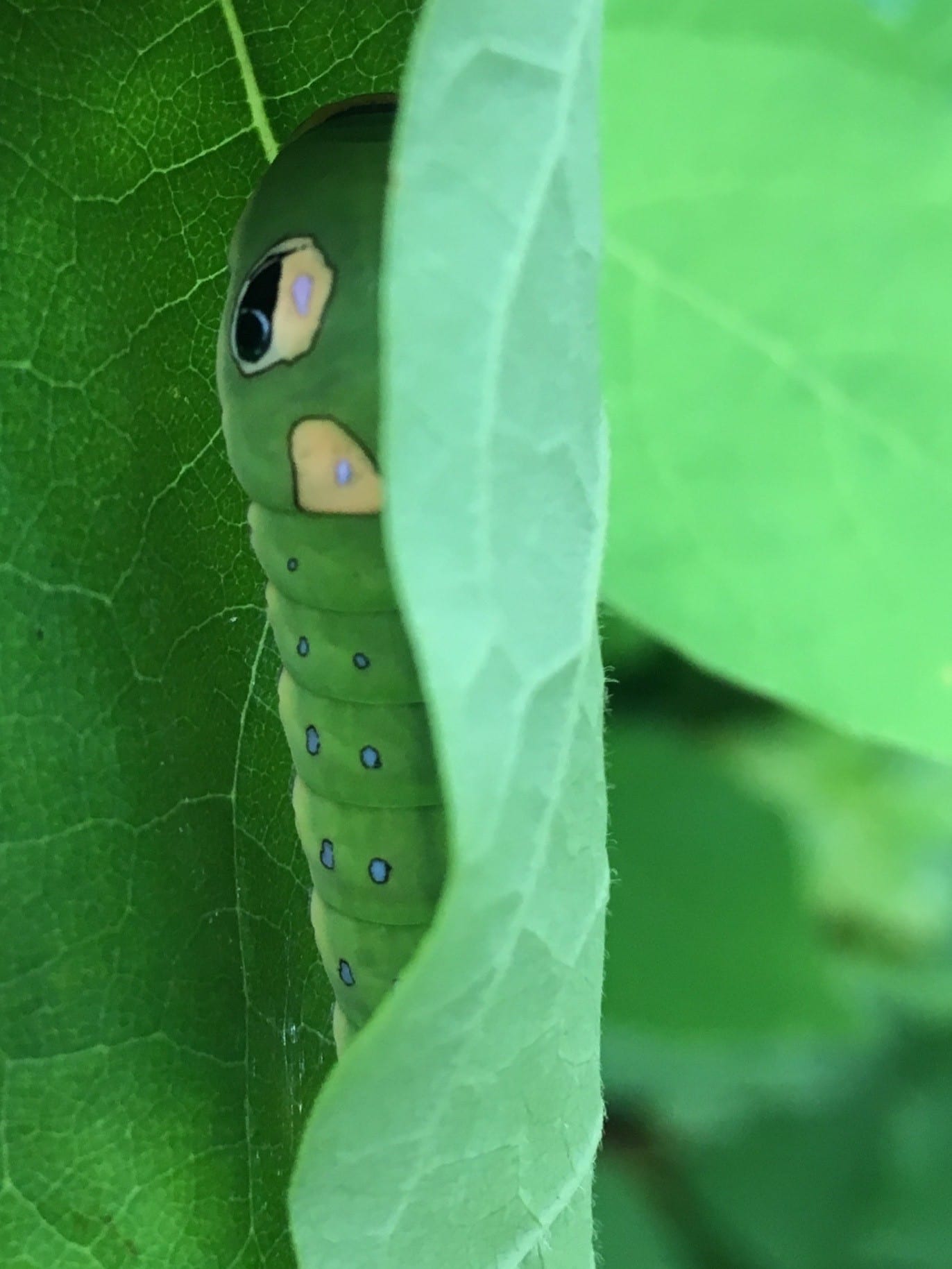
Susan Berliner: spicebush swallowtail on Lindera benzoin
Photographer: Susan Berliner
Photograph: Lindera benzoin (spicebush), Boston, MA
I first saw a spicebush in a butterfly house at a native plant nursery in the Berkshires. I loved the scent and seeing the amazing caterpillars and butterflies and so decided to plant one in my backyard. Incredibly, a butterfly or butterflies found it the following year, and I saw the first caterpillars. I am still fascinated by how they can locate an isolated shrub and how the caterpillars hide and camouflage themselves.
Judges’ Comments: This photo is both creative and inviting. The image is full of life with its saturation of lively green hues while the spicebush leaf shares a secret – a partially hidden caterpillar.
Pollinators
Honorable Mention
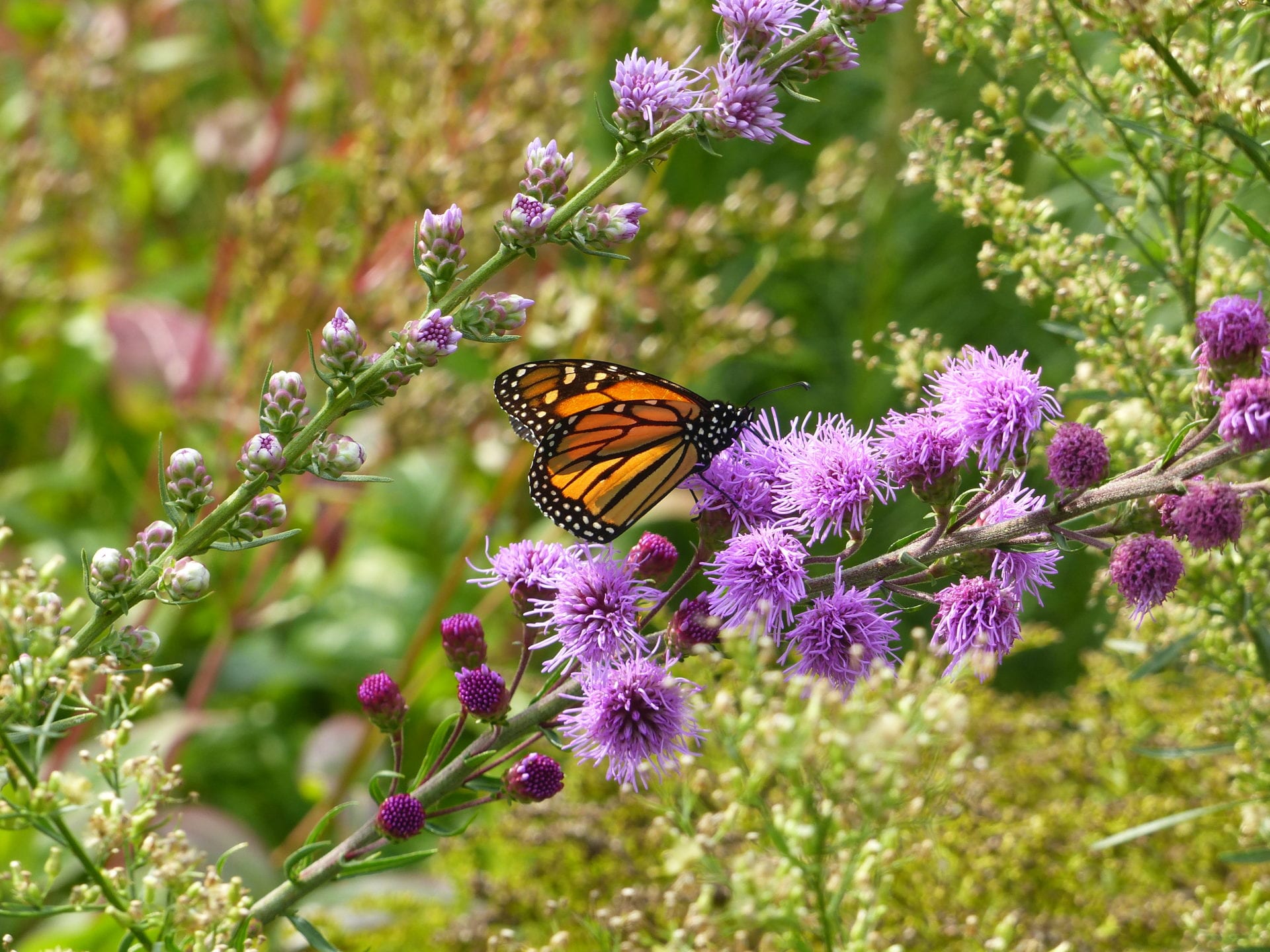
Yael Weiss: Liatris aspera
Photographer: Yael Weiss, Park Ecologist for Bethpage State Park
Photograph: Liatris aspera (rough blazing star), Farmingdale, NY
The contrast of the orange Monarch foraging on the purple florets of Rough Blazing Star was a dazzling moment to capture.
Judges’ Comments: The natural curved lines of the Liatris stems carry the eye across and around the setting while framing the pom pom blooms and nectaring and well lit monarch.
About the Judges
Jason Hafstad is the botanist for the Endangered & Threatened Species Unit at the New Jersey Department of Environmental Protection. He is an avid photographer of rare and other native plants in the wild and cares deeply about conservation of biodiversity and understanding how urbanized landscapes can maximize ecological utility by mimicking the natural world.
Joelle Lopez, environmental protection professional, and citizen scientist, is happiest photographing the natural world. She finds sharing her view celebrating the tiny and fleeting moments of wonder, helps her and others to a larger appreciation of the planet and its complexity. She is working towards transforming her Florida garden to native plants in support of wildlife especially birds and butterflies.
Lucy Birkett is an ecosystem garden practitioner, coach, and self-described “plant librarian” based in Freeport, Maine. Lucy’s favorite work is in introducing clients and community members to the plants and other wild beings with whom they live, and deepening relationships with them through gardening, observation, identification, and art. Lucy has worked on farms over the course of her life and is passionately learning about regenerative farming and ecological restoration. Lucy tends her own home-grown native plant nursery and helps clients set up their own small nurseries as well.
***
ELA retains original copyright. Right to reproduce or disseminate all material herein, including to Columbia University Library’s CAUSEWAY Project, is otherwise reserved by ELA. Please contact ELA for permission to reprint.
Mention of products is not intended to constitute endorsement. Opinions expressed in this newsletter article do not necessarily represent those of ELA’s directors, staff, or members.

